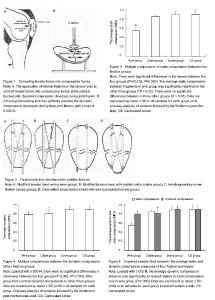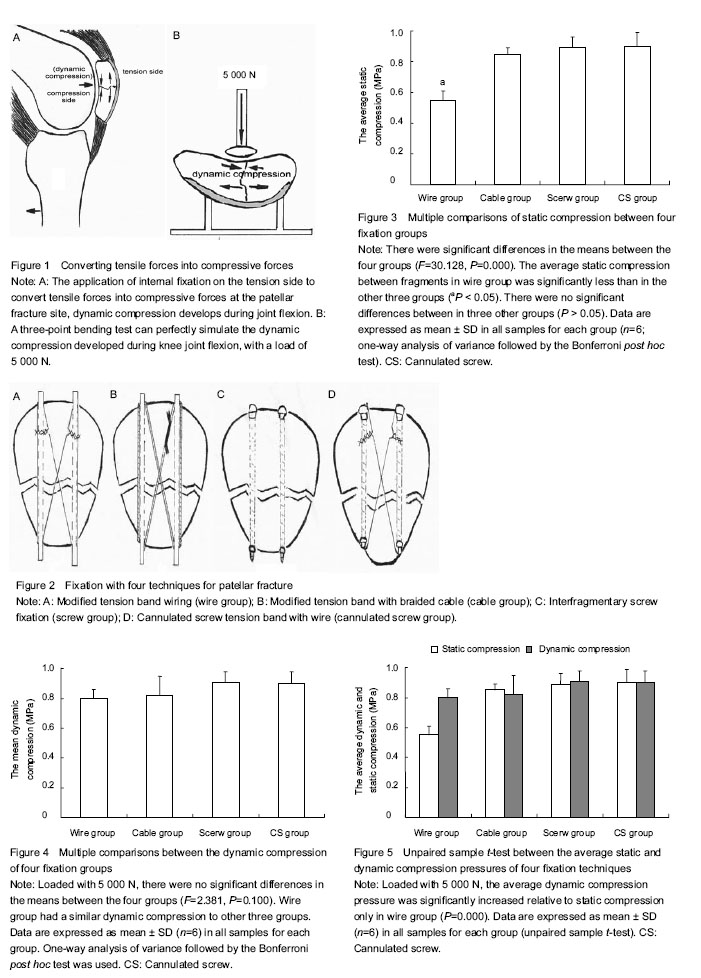| [1] |
Xu Feng, Kang Hui, Wei Tanjun, Xi Jintao.
Biomechanical analysis of different fixation methods of pedicle screws for thoracolumbar fracture
[J]. Chinese Journal of Tissue Engineering Research, 2021, 25(9): 1313-1317.
|
| [2] |
Chen Xinmin, Li Wenbiao, Xiong Kaikai, Xiong Xiaoyan, Zheng Liqin, Li Musheng, Zheng Yongze, Lin Ziling.
Type A3.3 femoral intertrochanteric fracture with augmented proximal femoral nail anti-rotation in the elderly: finite element analysis of the optimal amount of bone cement
[J]. Chinese Journal of Tissue Engineering Research, 2021, 25(9): 1404-1409.
|
| [3] |
Zhou Jihui, Li Xinzhi, Zhou You, Huang Wei, Chen Wenyao.
Multiple problems in the selection of implants for patellar fracture
[J]. Chinese Journal of Tissue Engineering Research, 2021, 25(9): 1440-1445.
|
| [4] |
Xu Yulin, Shen Shi, Zhuo Naiqiang, Yang Huilin, Yang Chao, Li Yang, Zhao Heng, Zhao Lu.
Biomechanical comparison of three different plate fixation methods for acetabular posterior column fractures in standing and sitting positions
[J]. Chinese Journal of Tissue Engineering Research, 2021, 25(6): 826-830.
|
| [5] |
Cai Qunbin, Zou Xia, Hu Jiantao, Chen Xinmin, Zheng Liqin, Huang Peizhen, Lin Ziling, Jiang Ziwei.
Relationship between tip-apex distance and stability of intertrochanteric femoral fractures with proximal femoral anti-rotation nail: a finite element analysis
[J]. Chinese Journal of Tissue Engineering Research, 2021, 25(6): 831-836.
|
| [6] |
Song Chengjie, Chang Hengrui, Shi Mingxin, Meng Xianzhong.
Research progress in biomechanical stability of lateral lumbar interbody fusion
[J]. Chinese Journal of Tissue Engineering Research, 2021, 25(6): 923-928.
|
| [7] |
Xie Chongxin, Zhang Lei.
Comparison of knee degeneration after anterior cruciate ligament reconstruction with or without remnant preservation
[J]. Chinese Journal of Tissue Engineering Research, 2021, 25(5): 735-740.
|
| [8] |
Xu Junma, Yu Yuechao, Liu Zhi, Liu Yu, Wang Feitong.
Application of 3D-printed coplanar template combined with fixed needle technique in percutaneous accurate biopsy of small pulmonary nodules
[J]. Chinese Journal of Tissue Engineering Research, 2021, 25(5): 761-764.
|
| [9] |
Nie Shaobo, Li Jiantao, Sun Jien, Zhao Zhe, Zhao Yanpeng, Zhang Licheng, Tang Peifu.
Mechanical stability of medial support nail in treatment of severe osteoporotic intertrochanteric fracture
[J]. Chinese Journal of Tissue Engineering Research, 2021, 25(3): 329-333.
|
| [10] |
Tan Jiachang, Yuan Zhenchao, Wu Zhenjie, Liu Bin, Zhao Jinmin.
Biomechanical analysis of elastic nail combined with end caps and wire fixation for long oblique femoral shaft fractures
[J]. Chinese Journal of Tissue Engineering Research, 2021, 25(3): 334-338.
|
| [11] |
Chen Lu, Zhang Jianguang, Deng Changgong, Yan Caiping, Zhang Wei, Zhang Yuan.
Finite element analysis of locking screw assisted acetabular cup fixation
[J]. Chinese Journal of Tissue Engineering Research, 2021, 25(3): 356-361.
|
| [12] |
Wang Weigang, Yang Zhidong, Feng Zongquan, Wang Ding.
A mid-term clinical follow-up of unicompartmental knee arthroplasty with fixed bearing
[J]. Chinese Journal of Tissue Engineering Research, 2021, 25(3): 368-373.
|
| [13] |
Zhou Jihui, Li Xinzhi, Zhou You, Huang Wei, Chen Wenyao.
Comparison of the advantages and disadvantages of multiple implants in treatment of traumatic dislocation of sternoclavicular joint
[J]. Chinese Journal of Tissue Engineering Research, 2021, 25(3): 443-448.
|
| [14] |
Li Kun, Li Zhijun, Zhang Shaojie, Gao Shang, Sun Hao, Yang Xi, Wang Xing, Dai Lina .
A 4-year-old child model of occipito-atlanto-axial joints established by finite element dynamic simulation
[J]. Chinese Journal of Tissue Engineering Research, 2021, 25(24): 3773-3778.
|
| [15] |
Sun Maji, Wang Qiuan, Zhang Xingchen, Guo Chong, Yuan Feng, Guo Kaijin.
Development and biomechanical analysis of a new anterior cervical pedicle screw fixation system
[J]. Chinese Journal of Tissue Engineering Research, 2021, 25(24): 3821-3825.
|

